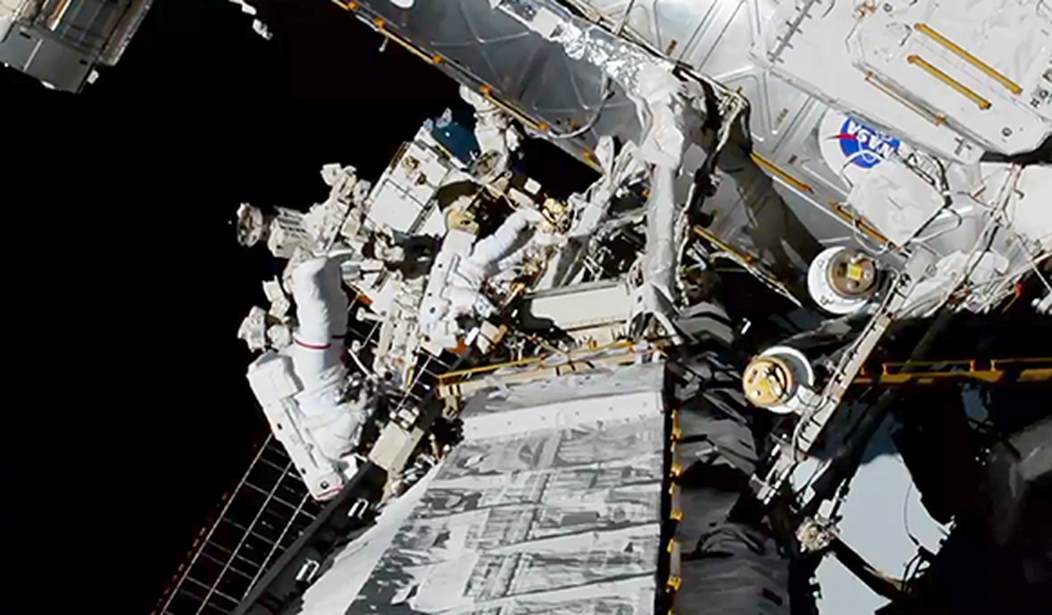We’ve been sending a lot of hardware (and people) up into space recently, particularly since Elon Musk has started delivering crew members to the ISS in addition to all of the cargo and satellites he ships into orbit. And we’re not alone. The Chinese are now working on their own space station and the Russians seem to be teaming up with them. Over the years, we’ve done a fairly good job of keeping space outside of the political realm and we’ve even partnered up with some of our terrestrial adversaries at times. But is that coming to an end? The Air Force Research Laboratory recently released a report urging the new United States Space Force to prepare for possible military action outside of our atmosphere. As the competition in the new space race heats up and we come closer to potentially colonizing the moon and eventually Mars, the possibility for armed conflict over new territory and resources really can’t be ignored. (The Debrief)
The Air Force Research Laboratory (AFRL) released their “A Primer on Cislunar Space” to the public in late June, with the report specifically being directed towards military personnel–particularly the Space Force–to begin developing plans to expand the force into the cislunar area. Up until now, the entirety of the USSF’s operations have been conducted on Earth or in its geostationary range, which is where satellites sit in orbit, but the primer states that this range of interest will begin to increase tenfold as space operations from the U.S. private and public sectors begin. The report is comprehensive and technical, detailing the effects of the celestial bodies’ gravity and orbits as well as sensors used to effectively monitor the region.
The AFRL’s goal with the report was to “educate and inspire”, according to Director of Space Vehicles Directorate Col. Eric Felt. The Space Force and NASA have since entered an agreement of cooperation regarding cislunar technological development, a more recent example being the space monitoring experiment “Cislunar Highway Patrol System”.
The report suggests that as space technology continues to develop and the reality of space colonization efforts grow closer, competition between nations will become inevitable.
The primary concern we’ve had with the militarization of space thus far has mostly centered on the ability of other nations (and the United States) to potentially start taking out satellites in low Earth orbit, disrupting navigation systems and communications. The technology to do that already exists, and the Americans, along with the Chinese and Russians have developed such covert programs.
But what if the conflict moves significantly beyond that orbit and out into cislunar space or even to the moon and Mars? (Cislunar means the space between the Earth and the moon.) Humans have gotten pretty good at fighting on land. We’re also quite advanced when it comes to fighting in the air and even under the water. But space is another ballgame entirely. If your jeep gets shot out from under you during battle and you survive the hit, you can get out and walk. If your fighter jet has a wing blown off, you can hit the ejection switch and deploy a parachute. If things go badly for you in a naval battle, there’s at least the possibility of a lifeboat.
But the vacuum of space is instant death for unprotected humans. And the ships we send out into the void tend to be very fragile things due to the need to minimize the weight of anything lifting off from Earth. Blowing up or even disabling any of the craft we currently use wouldn’t take much in the way of offensive technology. The same might be said for the lunar surface. Even if we build pressurized domes full of breathable air for humans to work in, popping a few holes in one of them likely wouldn’t take much effort and then the crew of that station would be doomed.
Of course, all of that assumes that we’re talking about manned missions. We already send autonomous and remote-controlled craft out into space. I suppose we could strap some weapons to them and be ready to fight it out, but to what purpose? Our adversaries would just send out their own to return the favor.
Science fiction is full of tales of fleets of space cruisers charging into battle among the stars or raining destruction down on enemy planets from above. But the reality of human technology in the 2020s is far from coming close to any such scenarios. While it may pain us to say it, we’re probably better off figuring out a way to set aside our differences once we leave the atmosphere and simply ignore each other if we can’t find a way to cooperate.








Join the conversation as a VIP Member